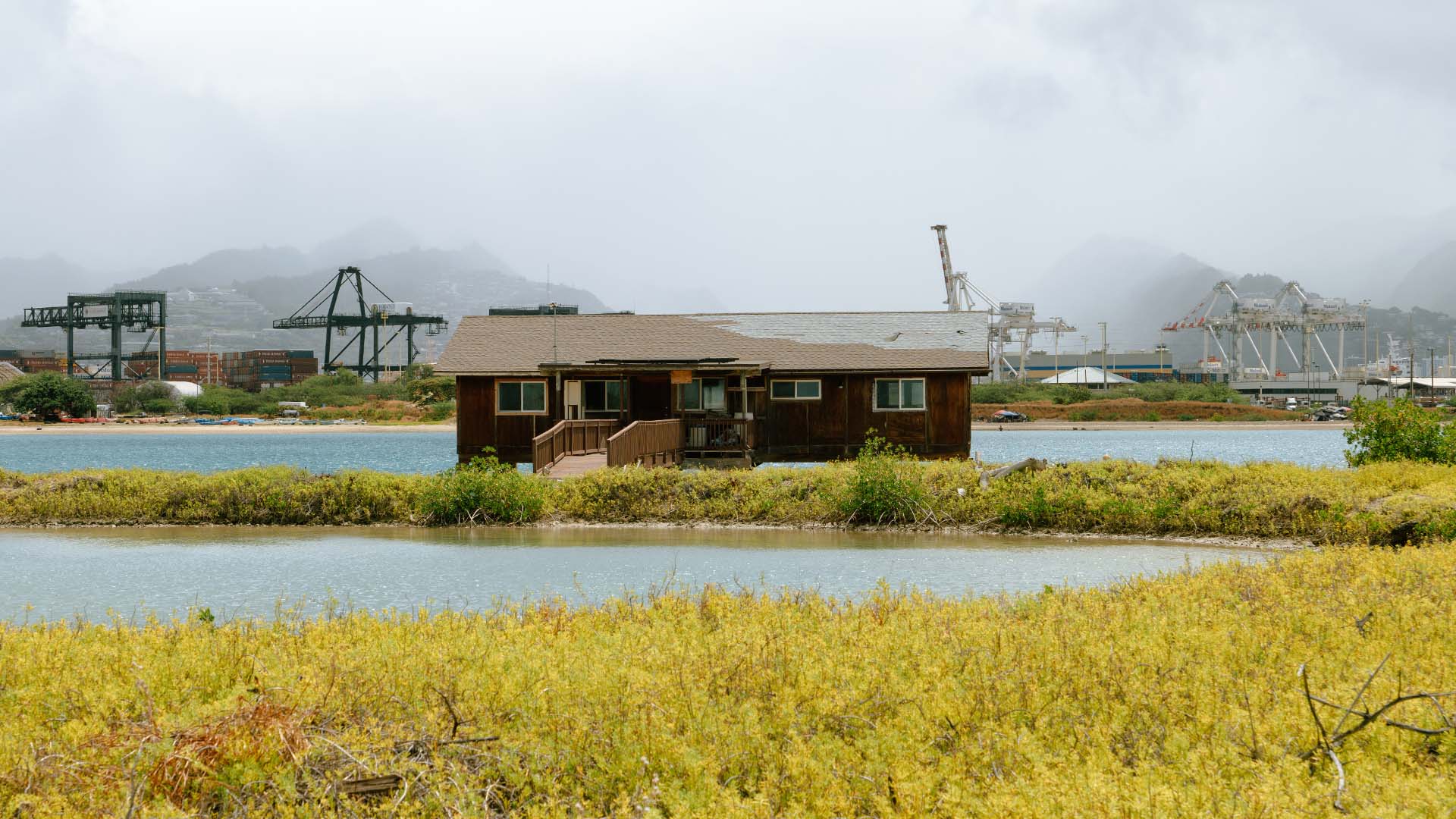On Mokauea Island, the site of O‘ahu’s last traditional fishing village, families have fought for decades to preserve their traditional way of life.
Images by Josiah Patterson
A light summer rain falls on O‘ahu an hour after daybreak as BJ Bagood drives his boat the short distance from Ke‘ehi Harbor to his childhood home on Mokauea. As Mokauea is in the rain shadow of O‘ahu, the weather clears a few hundred yards out from his destination. Mauoli Ola, the traditional name for Sand Island, is in plain sight across the channel. Commercial jets and military aircraft occasionally roar overhead as they travel to and from neighboring Daniel K. Inouye International Airport and Hickam Air Force Base.
“The lease says Mokauea Island is 13.75 acres in diameter, but we aren’t real sure of the exact dimensions,” says BJ’s mother, Joni Bagood, who, along with her husband, Benjamin, is one of the last remaining full-time residents of the island. The salt air is unkind to structures here. BJ, a carpenter by trade, returns often to work on the family home, which sits on stilts overlooking the busy Kalihi Channel. That proximity to the sea—a life full of daily observations on the tides and weather and natural habitat—has made Joni protective of her home, and of the ecosystem that once provided thousands across O‘ahu’s south shore with an abundance of wild seafood.
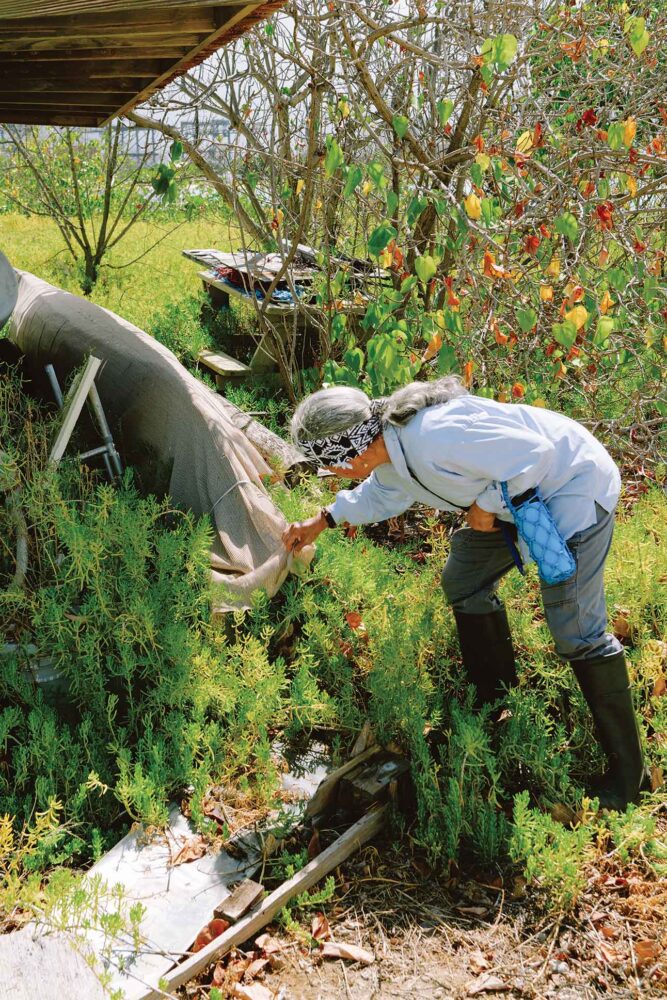
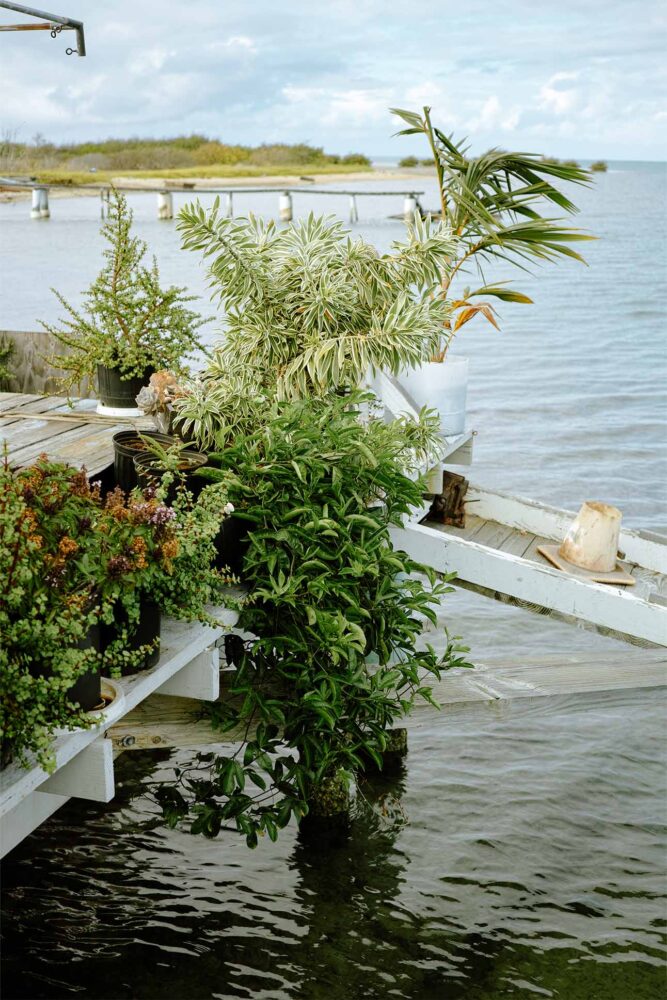
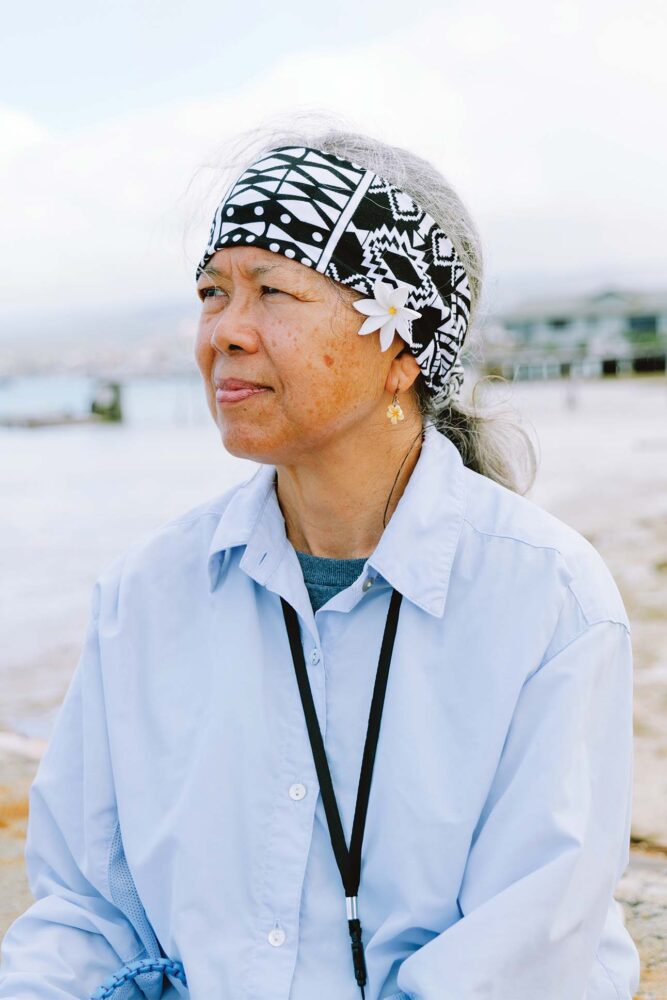
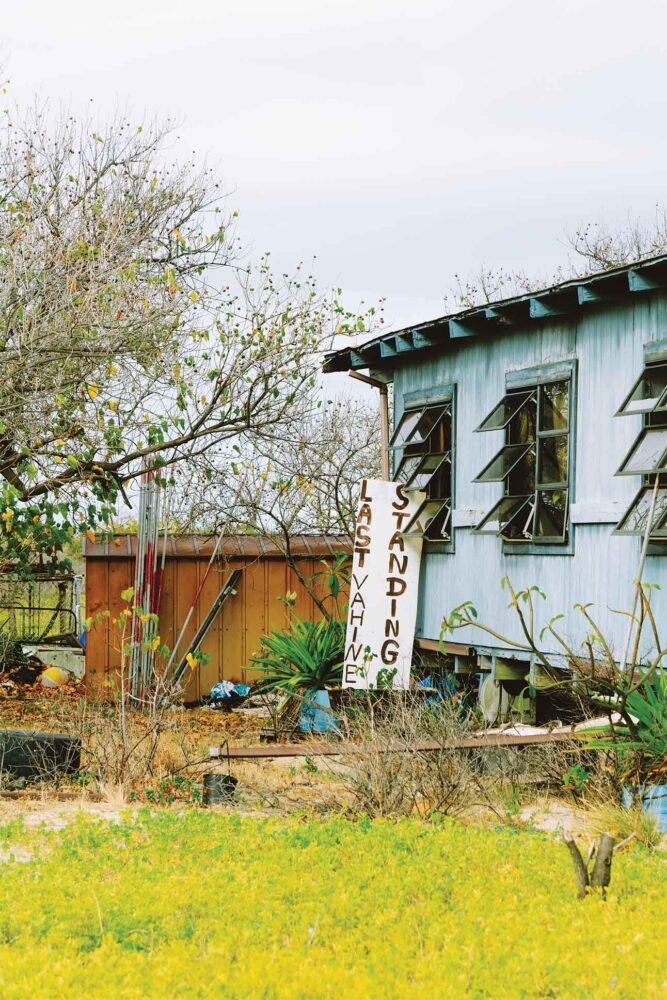
The southern shore of Mokauea offers a glimpse of how the O‘ahu coastline once appeared: White sand gives way to a shallow, fringing reef that gently slopes nearly a kilometer out to sea before dropping off into deep blue water, teeming with life. But circumnavigate the island and you’ll find that the shallow reef is now populated by mangrove, which have become invasive across the archipelago. You might also notice the reef itself is displaced—it’s easy to distinguish signs of the dredging that gouged the seascape into odd angles.
It’s also easy to see why fishers have always found their way here. Small fish dart between pools in the low tide and become trapped a few hours a day; ula (spiny lobster) and ula pāpapa (slipper lobster) hide in the crevices, waiting until evening to venture out; limu (seaweed) of both endemic and invasive varieties populate the crumbly reef. Pedestals which overlook the shallow waters, both natural and built by fishers, offer excellent vantage for a throw net. At night, with a small torch, lobsters can be grabbed by hand. The reef muffles even the largest of swells, allowing for the berthing of canoes for deep-water fishing.
Resident families have fought for half a century to preserve their traditional way of life. However, uncertainty about their long-term leases loom.
A century ago, there were several small, populated islands like Mokauea scattered along the south shore of O‘ahu near the mouth of Pu‘uloa, now known as Pearl Harbor. Over the years, the islands were dredged to create the naval base at Pearl Harbor, to construct a 12,000-foot offshore airport runway, and to establish harbors and seawalls along the coast from Pu‘uloa to famous Leahi (Diamond Head). The ribbon of reef that connected Mokauea Island to nearby Kahaka‘aulana and Mokuoeao islands was removed to create the Kalihi Channel, along which wind and current now push refuse from O‘ahu to Mokauea. On a journey around the island, I see the remains of a mattress, an electric guitar, and all forms of fishing gear. Though a short swim away from O‘ahu, Mokauea somehow feels a world away from what Joni calls “the mainland,” and the rubbish that accumulates on its shores is a constant reminder of O‘ahu’s ongoing industrialization.

The story of Mokauea Island and Mauoli Ola, and of the community that still calls Mokauea home, offers a counter-narrative to what has been sold as American progress. In the first part of the 20th century, Honolulu became the political and economic capital of first an American territory, then later an American state and the hub of American military in the Pacific. Throughout World War II, families were evicted from Mauoli Ola and its neighboring islands to allow for the dredging of a seaplane runway; after statehood in 1959, the new state government was determined to continue developing the area and set out to evict the few families who resettled on the islands after the war.
The state made another attempt in 1972 to evict those still living on the islands—this time, to build an airport extension—and burned down five homes in 1975. “There was another fisherman, a friend of ours who lived at Mokuoeao, the island across the channel,” Joni remembers. “He said, ‘I built this house with my two hands. I can’t let them burn it down. I have to do it myself.’”
That night, news broke about the destruction on Mokauea and the arrests of protesters and fishers who refused to leave. “My husband is the last of that generation of fishermen,” Joni says, “but he doesn’t like to talk about it, unlike me.”
The state-sponsored arson triggered a public outcry, and John Kelly Jr., an activist and leader of the grassroots environmental group Save Our Surf, petitioned the governor to cease the evictions. Kelly noted that the U.S. Army Corps of Engineers dredged far deeper than they were supposed to, and that the state had violated the 1970 Environmental Protection Act and new state law that protected Hawai‘i’s environment and culture.
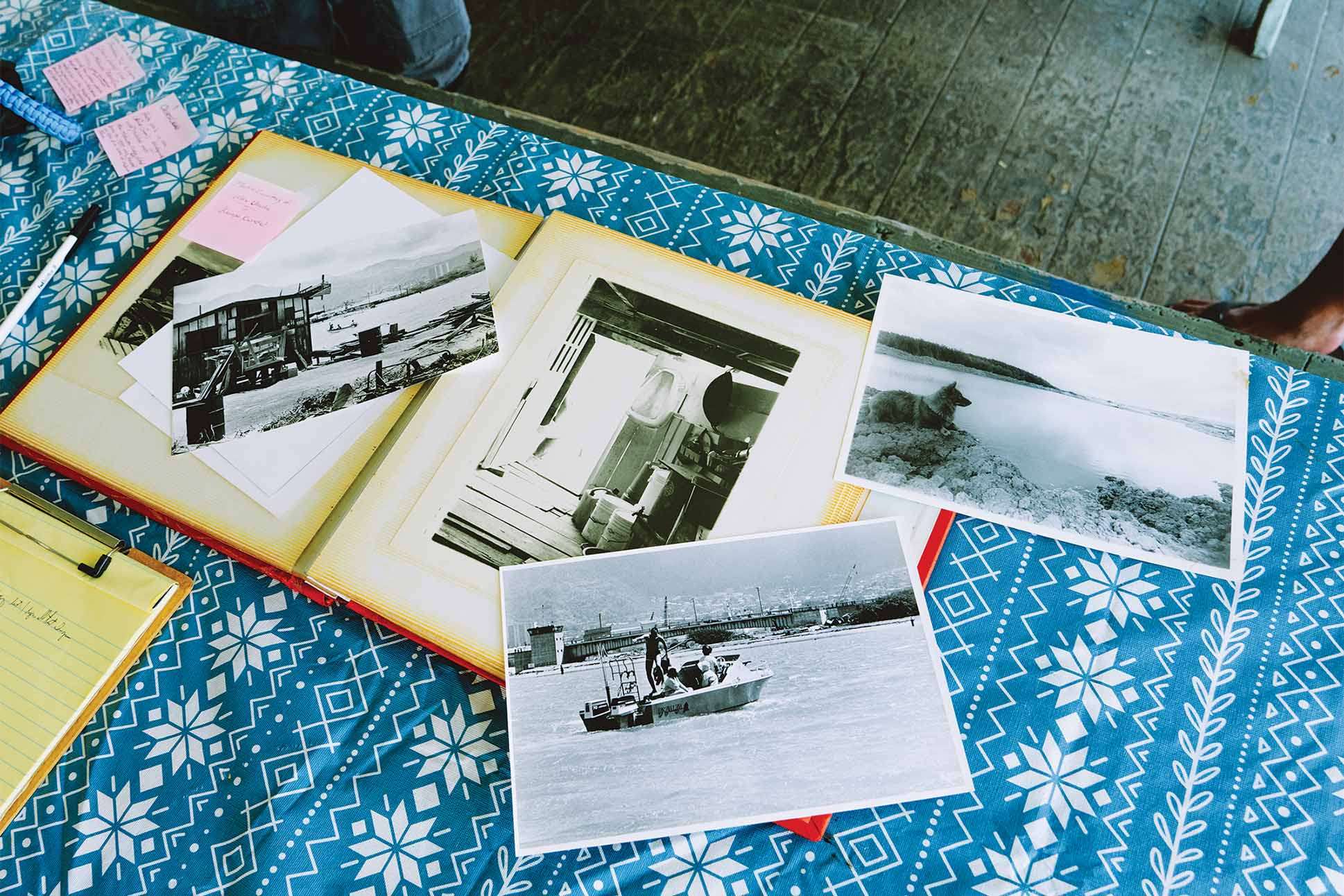
A century ago, there were several small, populated islands like Mokauea scattered along the south shore of O‘ahu near the mouth of Pu‘uloa.
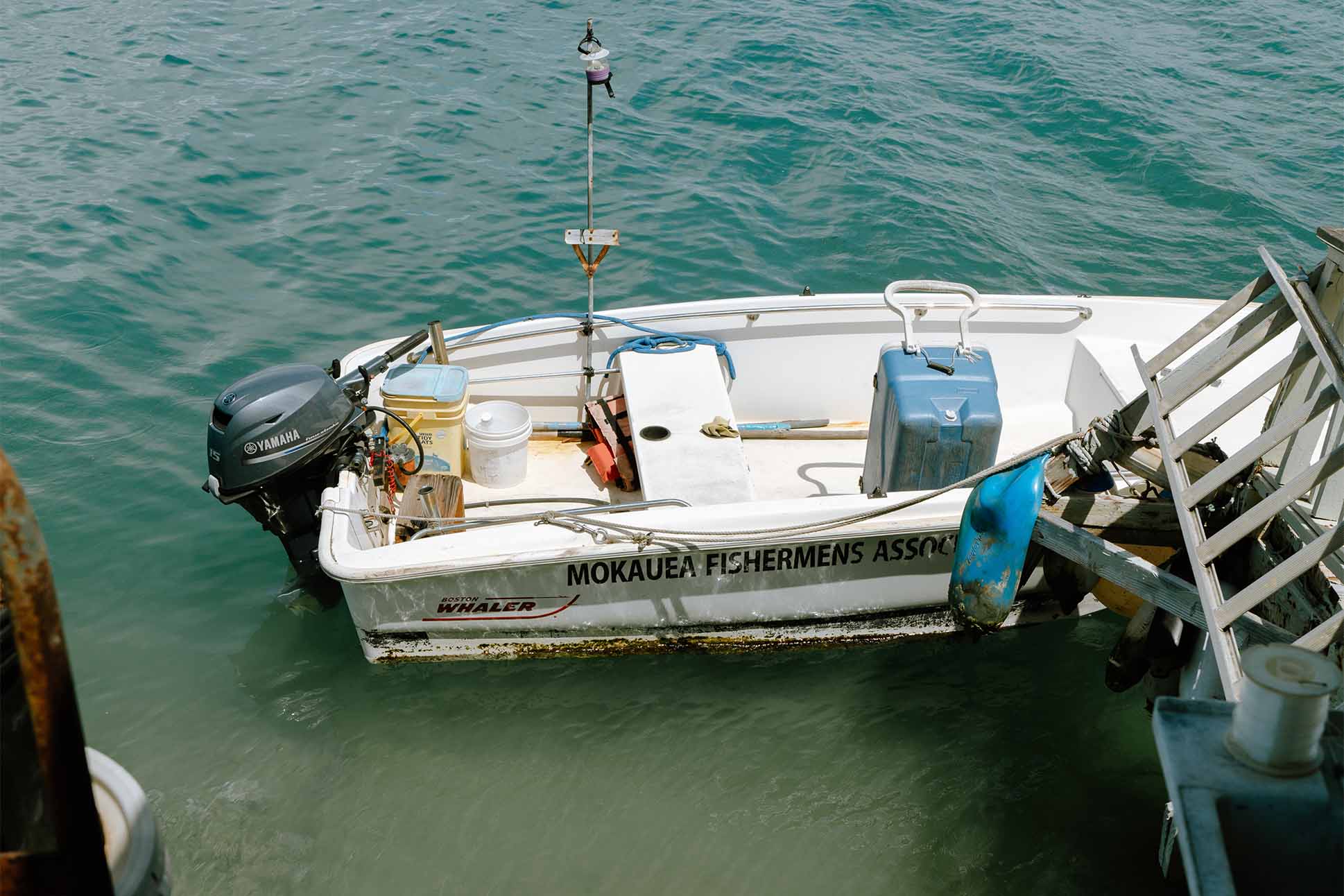
Over the years, the islands were dredged to create the naval base at Pearl Harbor, to construct a 12,000-foot offshore airport runway, and to establish harbors and seawalls along the southern coast.
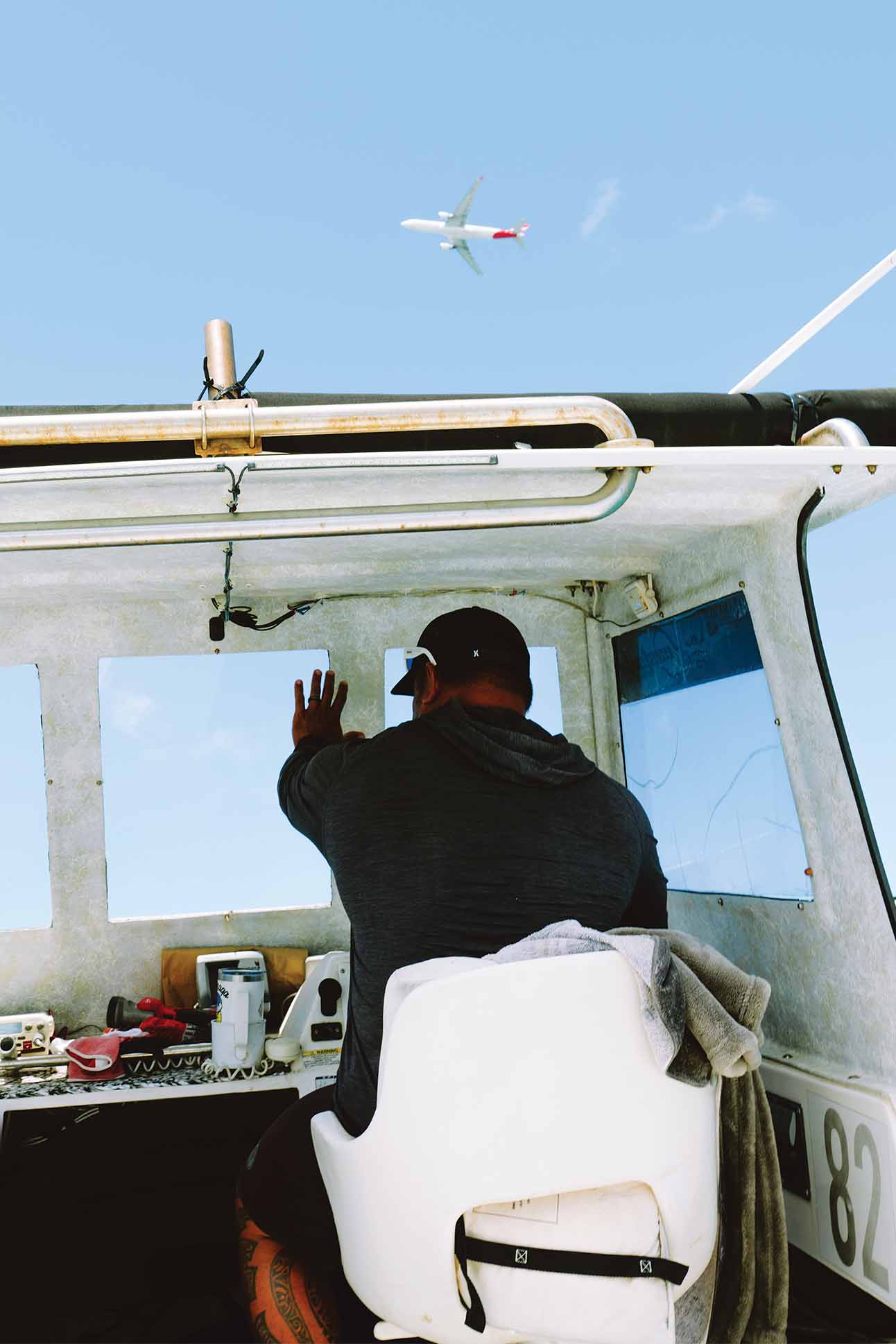
BJ Bagood drives his boat the short distance from Ke‘ehi Harbor to his childhood home on Mokauea.
“Fishing and agriculture were the primary occupations in pre-contact Hawai‘i, and all life depended on them,” reported a 1976 historical study produced by the state. “The fishing community lifestyle is nearly extinct today, with the exception of Mokauea Island off O‘ahu and Miloli‘i on the island of Hawai‘i … Because of the importance of fishing to Hawaiians, and due to the paucity of existing fishing communities, Mokauea Island is an area of important historic concern.” Two years later, the state Department of Land and Natural Resources granted leases to 14 families who lived in the village and established the Mokauea Fishermen’s Association to preserve the traditional way of life on the island. Later, an education center was built, and the Army Corps of Engineers, the University of Hawai‘i, and various nonprofit organizations have launched continuing efforts to preserve the culture and ecology of Mokauea.
“With the bad comes the good I guess,” BJ says, opening a photo album to reveal a series of monochrome photographs of the Bagood family. He and Joni reminisce over pictures of the village’s residents out fishing, children playing on the reef with the dog, and snapshots showing the silhouettes of carnival rides at the 50th State Fair, seen from across the channel when the fair was held on Sand Island. “I’m generation three of four that’s lived here,” BJ says. “I try to come once a week with my kids. Eventually, the plan is to move back.”
In 2043, the 65-year lease granted to the Bagoods and other families on Mokauea by the state will expire. “We want to continue this, our way of life,” Joni says. “We want people to know about this place, to be educated about it, to see what should be preserved.”

